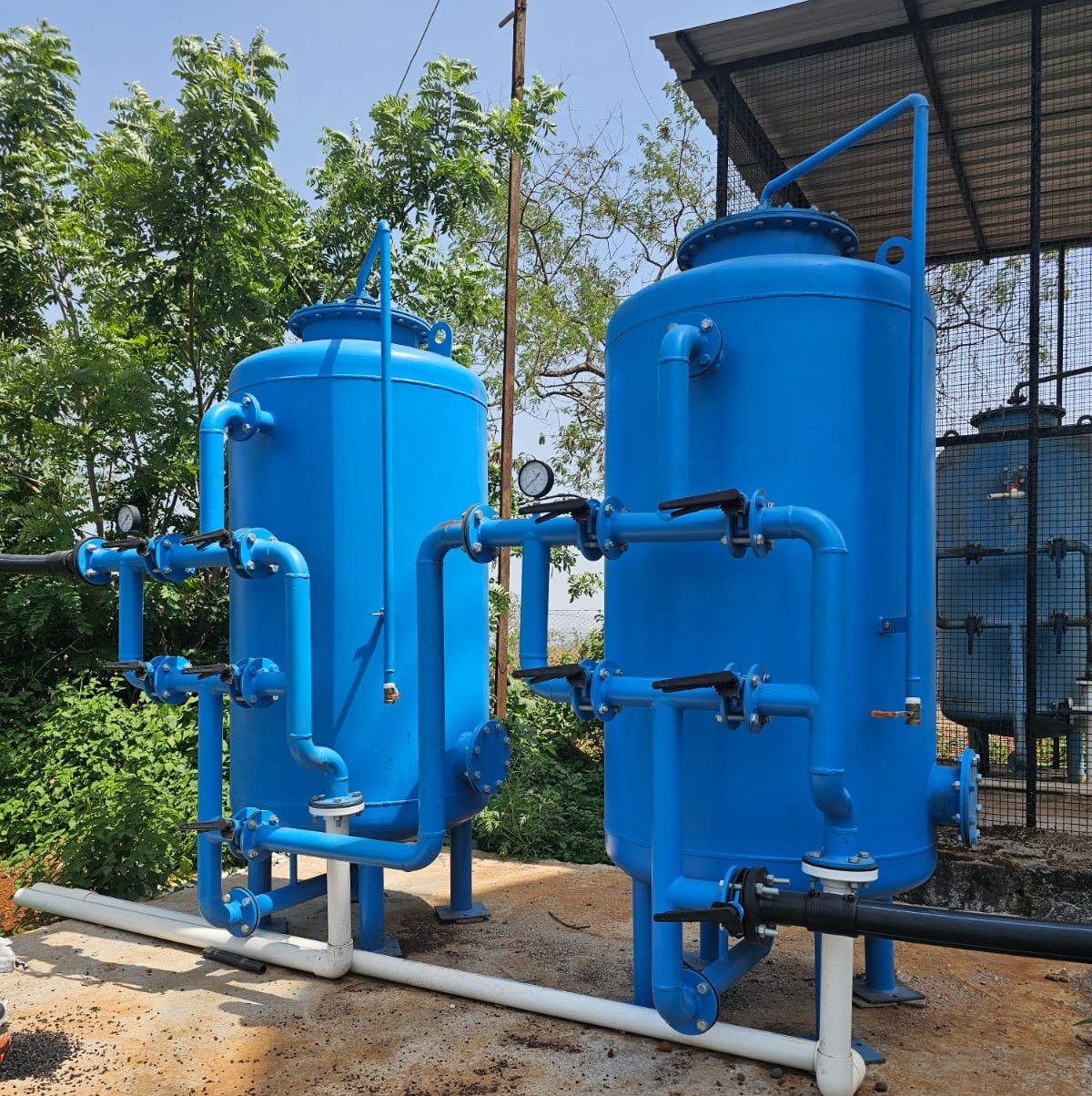
A Water Treatment Plant is a crucial facility designed to purify and treat water for a wide range of purposes, including potable water for human consumption, industrial processes, and wastewater treatment. These plants employ a combination of advanced physical, chemical, and biological processes to effectively remove contaminants from water, ensuring it meets safety standards for use across various applications. Our state-of-the-art water treatment plants provide sustainable and eco-friendly solutions, delivering clean drinking water, high-quality water for industrial and commercial use, as well as treated wastewater for reuse or safe discharge. With a focus on contaminant removal, our systems effectively eliminate suspended solids, organic materials, bacteria, and harmful chemicals, ensuring safe and high-quality water for residential, commercial, and industrial purposes.
Functionality of a Water Treatment Plant:
- Filtration: Removes suspended particles and impurities from the water.
- Coagulation and Flocculation: Chemical process to gather small particles into larger flocs.
- Disinfection: Kills harmful microorganisms (typically using chlorine or UV light).
- Reverse Osmosis: A filtration process that removes dissolved solids and contaminants.
- Activated Carbon Treatment: Adsorbs organic contaminants, chlorine, and odors.
- Sludge Removal: Removes residual waste generated from the treatment process.
Key Features of Water Treatment Plants include:
- Comprehensive Filtration Systems: Effective at removing a wide range of contaminants.
- Modular Design: Flexible and scalable to meet varying water treatment needs.
- Energy-Efficient: Cost-effective energy use for large-scale operations.
- Automated Control Systems: Monitors and optimizes the treatment process for efficiency.
- Safe Drinking Water Production: Ensures water quality meets all regulatory standards.
- Eco-Friendly Solutions: Reduces waste and environmental impact.
Water Treatment Plants are widely used in:
- Municipal Water Supply: Provides clean drinking water to communities.
- Industrial Use: Supplies treated water for manufacturing, cooling, and processing.
- Agriculture: Ensures water quality for irrigation and farming.
- Wastewater Treatment: Treats wastewater before it is safely returned to the environment.
- Power Plants: Provides water for cooling and other operations.
- Food and Beverage Industry: Ensures water meets safety standards for food production.